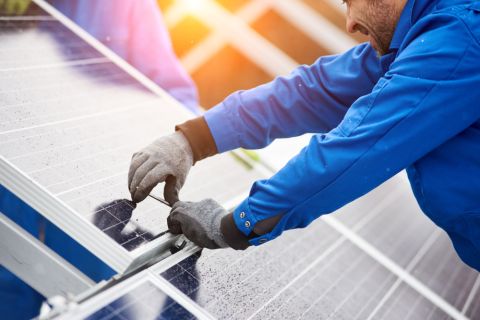
Although hidden in the shadows of its headline-grabbing unconventional oil and gas counterpart at times, the U.S. Gulf of Mexico (GoM) is still holding the attention of many oil and gas companies. But the region and other areas offshore the U.S. are still seen as a source of untapped energy potential.
Offshore development, particularly off the southeastern coast, was identified by the American Petroleum Institute (API) as an opportunity. It was among areas mentioned for potential growth in terms of jobs and production in the trade association’s Vote 4 Energy report on the status of the U.S. energy sector.
“As part of the 87 percent of federally controlled offshore acreage that is off limits to energy exploration, potentially significant geologic formations in the Atlantic Outer Continental Shelf (OCS) and Eastern Gulf of Mexico that could hold billions of barrels of untapped resources have been left out of the U.S. energy revolution that is transforming state economies in other regions,” API said in the report.
Citing figures from the U.S. Bureau of Ocean Energy Management, API said the entire GoM OCS could hold 48.4 billion barrels (Bbbl) and 219.5 trillion cubic feet (Tcf) of undiscovered technically recoverable federal oil and gas resources. Other areas out of reach for oil and gas drillers, such as in the Atlantic, Pacific and Alaskan regions, could hold a combined 41.5 Bbbl of oil and 295.2 Tcf of gas.
Federal regulators have taken some steps in parts of the Atlantic by allowing seismic companies to collect data that could point to hydrocarbon resources, the report noted.
“Multiple studies confirm significant economic benefits are waiting to be unlocked along with energy resources in the coastal Southeast,” the API said.
Data from Quest Offshore Resources show that opening off-limit areas in the Atlantic, Pacific and Eastern GoM could:
- Create nearly 840,000 jobs;
- Generate more than $200 billion in cumulative revenue for the government and
- Boost domestic energy production by 3.5 MMboe/d.
“Offshore oil and natural gas development is a long-term investment, and decisions made this decade will impact U.S. energy potential for decades to come,” API said. “To realize the full advantages of our energy resources and maintain global energy leadership, expanding offshore access to new areas is essential.”
The federal government is currently developing the 2017-2022 OCS oil and gas leasing program. The proposed program is scheduled for release for public comment this year. API hopes it includes areas off the Atlantic Coast.
“There are opportunities all around the globe. The difference is the United States is really emerging as the key player in the world,” API President and CEO Jack Gerard told the media Jan. 5.
Advanced technologies and improved techniques helped push U.S. oil production above 9.6 MMbbl/d in 2015, based on data from the U.S. Energy Information Administration, although production has since fallen due to lower commodity prices.
State Of American Energy
While delivering the annual State of American Energy address Jan. 5 in Washington, D.C., Gerard spoke about the gains of America’s oil and gas industry, opportunities and challenges.
He touted the industry’s production strides and emission reductions, while acknowledging bipartisanship displayed with the lifting of the crude oil exports ban and commending leadership at the state level. He, however, again lamented rejection of the Keystone XL pipeline and the federal renewable fuel standard and said the Clean Power Plan seeks to pick winners and losers in the energy market.
“Another example of why policy matters when it comes to energy is the glaring difference between energy production on state-controlled land and federally controlled land,” Gerard said. “Federal data show crude oil production remained flat between 2009 and 2014 on federally controlled land while natural gas production declined 35 percent.
“By contrast, on private and state lands, where development does not need permission from the federal government, production increased 88 percent for crude and 43 percent for natural gas,” he added. “These dramatically different trend lines are a function of political ideology, not geology.”
Yet, broadly speaking, Gerard called the state of American energy “strong” as the U.S. voters gear up for a presidential election in November.
During a media call after the address, Gerard said API has not aligned with any political campaign or party. He called oil and gas a common area where all can come together.
“Our goal is to keep the positive momentum of the last few years and to end the politicization of energy for petty partisan ends. We want to foster a national energy policy discussion that remains above the partisan fray, and immune from the misinformation campaign deployed by fervid critics of fossil fuels,” Gerard said during the address. “Because the reality is that, no single source of energy will alone solve our problems or is the source of all of our woes. Moreover, no group holds all of the answers or the solution to the challenges we face. What history has taught us is that America prospers most when we work together for the common good.”
Velda Addison can be reached at vaddison@hartenergy.com.
Recommended Reading
Greenbacker Names New CFO, Adds Heads of Infrastructure, Capital Markets
2024-02-02 - Christopher Smith will serve as Greenbacker’s new CFO, and the power and renewable energy asset manager also added positions to head its infrastructure and capital markets efforts.
First Solar’s 14 GW of Operational Capacity to Support 30,000 Jobs by 2026
2024-02-26 - First Solar commissioned a study to analyze the economic impact of its vertically integrated solar manufacturing value chain.
SunPower Begins Search for New CEO
2024-02-27 - Former CEO Peter Faricy departed SunPower Corp. on Feb. 26, according to the company.
SunPower Appoints Garzolini as Executive VP, Chief Revenue Officer
2024-03-14 - Tony Garzolini will oversee SunPower’s sales, including the direct, dealer and new homes channels, along with pricing and demand generation.
GE Vernova Completes Spin-Off from GE
2024-04-04 - GE Vernova, an energy transition company, began trading as an independent company on the New York Stock Exchange this week.





